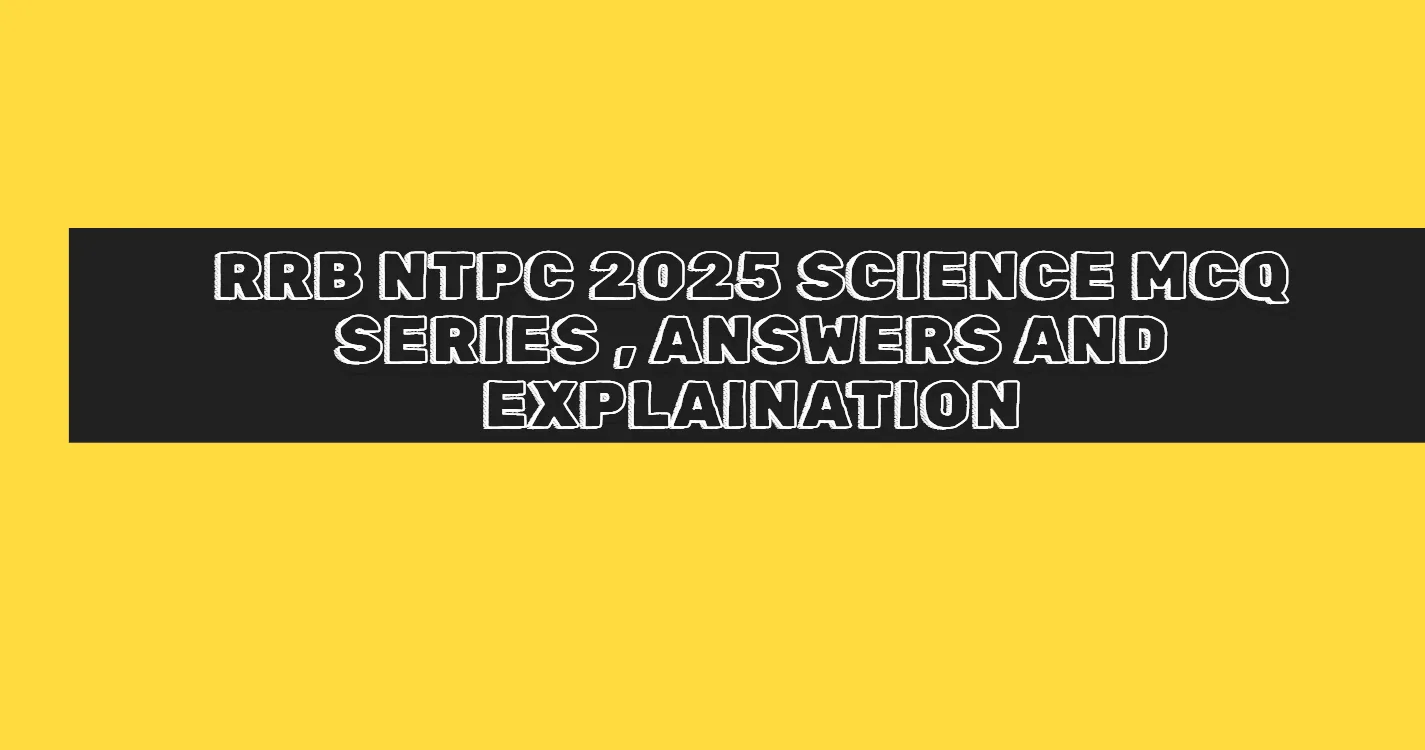- What is the SI unit of electric current?
- Volt
B. Ampere
C. Coulomb
D. Ohm
Answer: B. Ampere
Explanation: The ampere (A) is the base unit of electric current in the International System of Units (SI). - Which gas is most abundant in Earth’s atmosphere?
- Oxygen
B. Carbon dioxide
C. Nitrogen
D. Hydrogen
Answer: C. Nitrogen
Explanation: Nitrogen constitutes about 78% of the Earth’s atmosphere, making it the most abundant gas. - Which vitamin is responsible for blood clotting?
- Vitamin A
B. Vitamin C
C. Vitamin K
D. Vitamin D
Answer: C. Vitamin K
Explanation: Vitamin K is essential for synthesizing proteins required for blood coagulation. - What is the chemical formula of baking soda?
- NaCl
B. NaHCO₃
C. KCl
D. CaCO₃
Answer: B. NaHCO₃
Explanation: Baking soda is sodium bicarbonate, with the chemical formula NaHCO₃. - The hardest natural substance on Earth is:
- Graphite
B. Diamond
C. Quartz
D. Topaz
Answer: B. Diamond
Explanation: Diamond, a form of carbon, is the hardest naturally occurring material. - What is the function of xylem in plants?
- Transport of food
B. Transport of water
C. Photosynthesis
D. Reproduction
Answer: B. Transport of water
Explanation: Xylem is a vascular tissue responsible for transporting water and nutrients from roots to other parts of the plant. - The phenomenon of splitting of white light into its constituent colors is called:
- Refraction
B. Dispersion
C. Reflection
D. Diffraction
Answer: B. Dispersion
Explanation: Dispersion occurs when light passes through a prism, splitting into its spectrum of colors. - Which planet is known as the “Red Planet”?
- Venus
B. Mars
C. Jupiter
D. Mercury
Answer: B. Mars
Explanation: Mars is called the Red Planet due to its reddish appearance, caused by iron oxide (rust) on its surface. - What is the boiling point of water at sea level?
- 50°C
B. 100°C
C. 150°C
D. 200°C
Answer: B. 100°C
Explanation: At sea level, water boils at 100°C under standard atmospheric pressure. - Which part of the cell is responsible for energy production?
- Nucleus
B. Mitochondria
C. Ribosomes
D. Lysosomes
Answer: B. Mitochondria
Explanation: Mitochondria are known as the “powerhouses” of the cell, producing energy in the form of ATP. - The primary source of energy for Earth is:
- Wind
B. Fossil fuels
C. The Sun
D. Geothermal energy
Answer: C. The Sun
Explanation: The Sun provides energy for most natural processes on Earth, including photosynthesis and the water cycle. - Which element is a liquid at room temperature?
- Mercury
B. Gold
C. Sodium
D. Copper
Answer: A. Mercury
Explanation: Mercury is the only metal that is liquid at room temperature. - Which organ in the human body filters blood?
- Heart
B. Kidney
C. Liver
D. Lungs
Answer: B. Kidney
Explanation: Kidneys filter waste products from the blood to form urine. - The pH of pure water is:
- 7
B. 0
C. 14
D. 1
Answer: A. 7
Explanation: Pure water is neutral, with a pH of 7. - What is the smallest particle of an element?
- Molecule
B. Atom
C. Proton
D. Neutron
Answer: B. Atom
Explanation: Atoms are the basic building blocks of matter and the smallest unit of an element. - What type of lens is used to correct myopia?
- Convex lens
B. Concave lens
C. Cylindrical lens
D. Plane lens
Answer: B. Concave lens
Explanation: Myopia (nearsightedness) is corrected using concave lenses, which diverge light rays. - The process by which plants make food is called:
- Respiration
B. Photosynthesis
C. Transpiration
D. Fermentation
Answer: B. Photosynthesis
Explanation: Photosynthesis is the process where plants use sunlight, carbon dioxide, and water to produce glucose and oxygen. - What is the most common element in the human body?
- Carbon
B. Oxygen
C. Hydrogen
D. Nitrogen
Answer: B. Oxygen
Explanation: Oxygen makes up about 65% of the human body by mass, primarily in water and biological molecules. - The speed of light in a vacuum is approximately:
- 3 × 10⁶ m/s
B. 3 × 10⁷ m/s
C. 3 × 10⁸ m/s
D. 3 × 10⁹ m/s
Answer: C. 3 × 10⁸ m/s
Explanation: Light travels at a speed of approximately 300,000 km/s (or 3 × 10⁸ m/s) in a vacuum. - Which of the following is a renewable energy source?
- Coal
B. Oil
C. Solar energy
D. Natural gas
Answer: C. Solar energy
Explanation: Solar energy is a renewable energy source as it is derived from the Sun and is inexhaustible.

